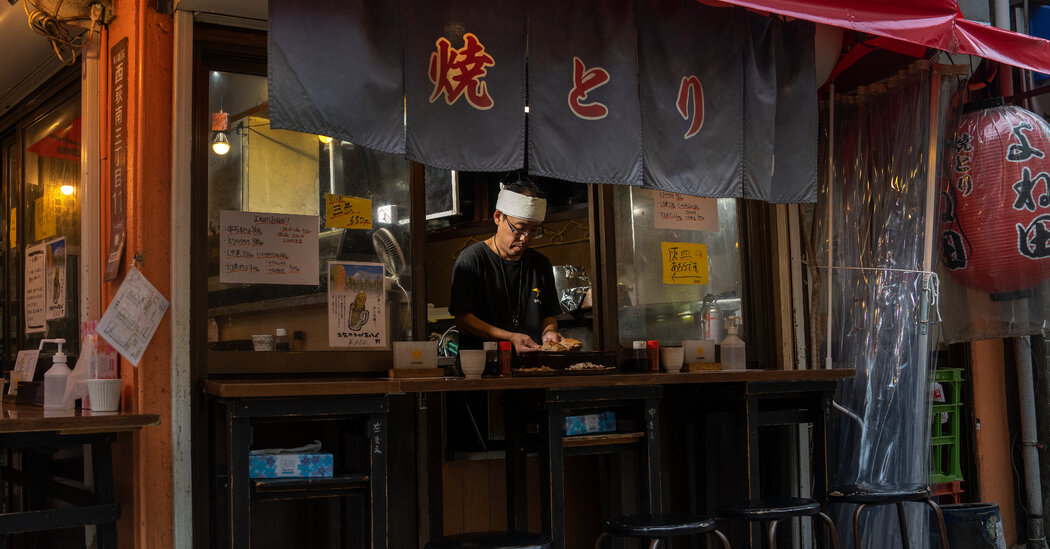It’s a Monday afternoon in the Tsujkiji branch of the Tokyo Sushi Academy and we’re about to be put to the test. Or I am anyway. Most of the other students enrolled in the Japanese Culinary Intensive course are professionals. They are local or from abroad, just brushing up on skills or adding to their repertoire. My bench mate works charter yachts out of Australia. Our sensei, the chef Hiro Tsumoto, noticed a tattoo on his forearm with Japanese characters and called out: “Hey, that’s my aunt’s name!”
I’m among the civilians whom the academy also welcomes into the course. I’m here for the challenge, certainly. But in this moment, I’m feeling distinctly in over my head.
Mr. Hiro, who is also one of the academy’s founders, has been walking us through the basics of kaiseki, a word used for both the traditional multicourse Japanese meal as well as the skills and techniques required to make it. This involves talking about a bewildering range of things, including knife cuts for notching the top of a shiitake mushroom, how to knot a sprig of the herb mitsuba for garnish, as well as the precise temperature to best extract flavor for dashi broth made from kombu seaweed and katsuobushi, or dried bonito fish shavings. On the topic of kaiseki Mr. Hiro grows briefly philosophical, noting that it’s a lifetime practice and thus approaching the ineffable.
“Like the kappa. What actually is the kappa?” he says, by way of a winking explanation. “OK, let’s cook!”
I’ll only learn later that the kappa is a mythic reptilian creature fond of cucumbers and sumo. At the moment, I have to dive into the fray of all these pros grabbing pots and grills and assembling ingredients for the fish stew we’re preparing.
My first order has arrived at the imaginary pass: an individual kaiseki serving of clear fish soup, osumashi, for one. My heart is racing. My hands are trembling. This has to be the most pressure I’ve ever experienced on what is supposed to be a holiday. But I am loving it.
A new respect for tempura and other classics
There are more obvious ways to explore Tokyo’s food scene. Following the Michelin stars makes a certain amount of sense given that the Michelin Guide lists 198 restaurants with 261 total stars this year, more than any other city on earth. But you could also arrive here without any food plan at all.
Tokyo may seem initially chaotic to visitors, but discovery and luck are key parts of the city’s charms. If you find yourself…
Click Here to Read the Full Original Article at NYT > Travel…
